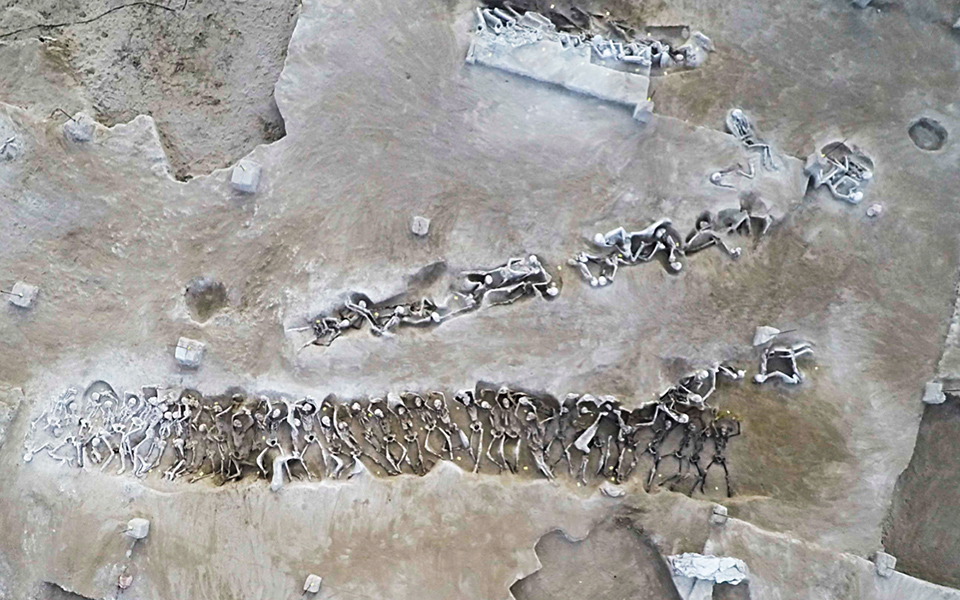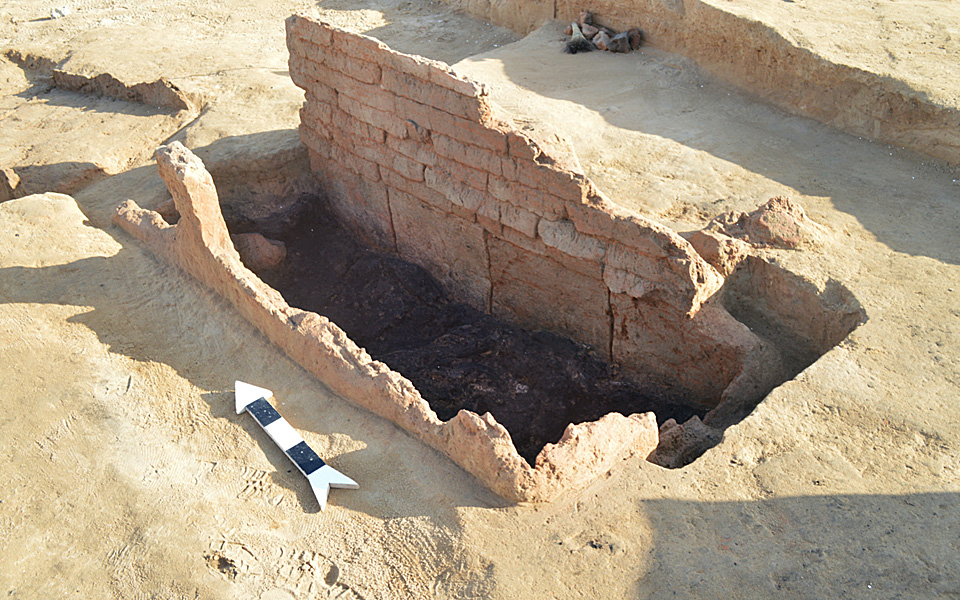The Unseen Museum Presents: “Minoan Octopi”
Four mysterious Bronze Age artifacts from…

Metal handcuffs attached to many of the skeletons have led them to be known as the “captives of Faliron.”
Archaeologists have revealed that the area of the Faliron Delta, 7.8 k south-west of the Athens center, is home to the largest cemetery of the Classical Age. A section of the site cleared in March revealed 80 skeletons – from a total of 1,500 – placed side by side in a 2.5-meter deep grave, half of them shackled. Metal handcuffs attached to many of the skeletons have led them to be known as the “captives of Faliron.”
The bodies recovered belong to well-built young men with excellent teeth and no bone fractures. The remains indicate that the men enjoyed good health until the time of death, possibly by mass execution. The skeletons were lined up, some on their backs and some on their stomachs. “The fact that half were shackled doesn’t mean all of them weren’t,” says archeologist Sevos Agouras who is involved in the excavations at the ancient cemetery. “They were all positioned with their hands behind their backs, and this indicates that they were probably bound in some way.”
Though there are some instances of shackled bodies in antiquity, such burials go against the practices of the Greek ancient world. “There are few incidents of bound captives uncovered in graves around Greece, however finding so many shackled skeletons together is unique to Faliron,” says Agouras.
One skeleton has an arrowhead stuck to its shoulder, indicating a possible capture, says lead archeologist Stella Chrysoulaki from the Ephorate of Piraeus, Western Attica, who presented the findings to the Central Archeological Council on April 13, 2016.
During her presentation of findings, Chrysoulaki said that the graves could be safely dated due to the presence of two trefoil jugs from the 7th century BC that were found nearby. This date connects the skeletons with the “Cylonian affair”, an attempted coup by Olympic champion and Athenian nobleman, Cylon, in 632 BC. The instigators of the coup were cornered and, though Cylon escaped, his followers took refuge in the temple of Athena at the Acropolis. Coaxed out of the temple with assurances that their lives would be spared if they stood trial, they were nonetheless massacred by Megacles of the powerful Alcmaeonid clan. The execution of the conspirators was condemned as sacrilegious by the city’s authorities.

The latest findings were unearthed during the construction site of the new National Library of Greece and National Opera being created by the Stavros Niarchos Foundation
These 80 bodies, the latest to be presented from the site, are just some of a wealth of findings which include a huge variation of burial practices from simple pit graves, infants and children buried in clay vessels, cremations complete with funeral pyres, at least four horses buried beside their owners and even one individual buried in a wooden boat used as a coffin. “Approximately 150 (burials) are in the D group, which includes unusual burial positions, including face down, thrown into pits, and some perhaps crucified,” says Jane Buikstra, founding director of the Center for Bioarcheological Research at Arizona State University who is the project director of the Faliron Bioarcheological Project.
“It is the only site to document the tumultous times that culminated in the institutions that have shaped the Western World,” says Buikstra. The 80 shackled skeletons are significant in depicting a political event from a dramatic chapter in Athenian history that shows the aristocracy’s resistance to change and the social turmoil that lead to 2,500 years of Athenian democracy.
The latest findings were unearthed during the construction site of the new National Library of Greece and National Opera being created by the Stavros Niarchos Foundation. The area is closed to the public, though at some point a museum with key findings from the site was discussed.
The Ministry of Culture issued a statement refering to the “high importance of these discoveries” that require further investigation.
Four mysterious Bronze Age artifacts from…
The removal marks a rare moment…
Twenty-nine rare antiquities spanning 5,000 years…
Permanent barrier installed at the Portara…